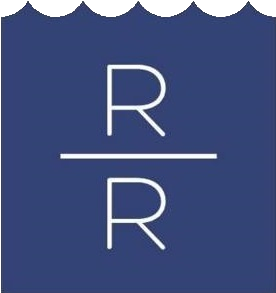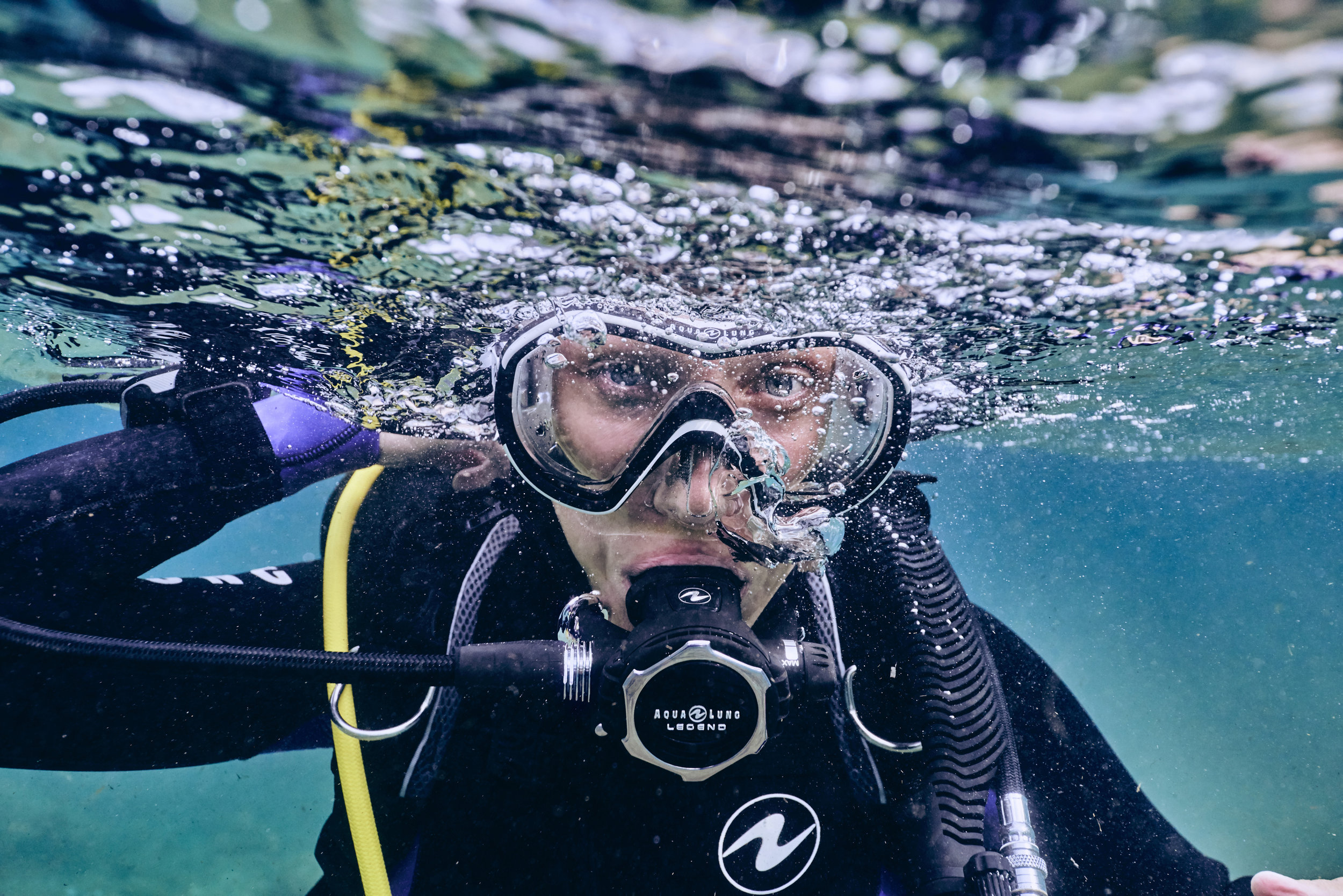Scuba Equipment Guide: Choosing a Regulator (Part 1)
Choosing a Regulator is one of the trickiest pieces of dive gear to pick out as so many regs on the market today appear to be very similar or at least difficult to differentiate in terms of features. Nevertheless, you could argue that the regulator is the most important and essential piece of dive equipment as most simply put: your life depends on it in the water!
It is very important when picking a regulator to choose one that suits your specific needs as a diver, based upon the type of diving you intend to use it for. A regulator that doesn't perform for your specific needs can often lead to uncomfortable and problematic diving. A well suited regulator however, can make breathing underwater as natural and easy as breathing on the surface.
A Regulator has 4 main components: 1st stage; 2nd stage; Octopus (Alternate 2nd Stage); & Hoses. Here we break down some of the essential features to look for and consider when choosing a regulator, and how those features will affect the use of the regulator whilst diving.
General Advice in Choosing a Regulator
Whilst all the features and designs we look at below will determine which is the right type of regulator for you and your diving, there are some basic considerations to bear in mind when choosing a regulator:
Safety - As mentioned before, a regulator is what keeps you alive underwater by allowing you to breathe. Make sure to invest in a reputable manufacturer as you know you will get a regulator with a proven, reliable design.
Ease of breathing - The best regulator is one that makes breathing as easy underwater as it is on the surface regardless of depth or conditions.
Price - Investing in a top of the line model will provide benefits of performance and durability which will help any diver, especially when that equipment will keep you alive in the water. If price is an issue, it’s almost always cheaper to buy better in the long run. Bare in mind that regulators require regular servicing. A lot of the best regulators will have a ‘Free parts for life’ program which will cover the costs of any parts that need replacing, significantly saving you money over time.
Serviceability - Depending where you live make sure you are able to have your regulator serviced by an authorized dealer locally. Services for some regulators can be difficult to obtain without having to send it off.
Don’t be afraid to ask for help - Here at Rowand’s Reef we are knowledgeable and experienced when it comes to regulators, and ready to share that knowledge with you should you have any questions about a certain model or buying a regulator.
Piston vs Diaphragm First Stages: Does it matter?
Balanced Diaphragm 1st Stage (Open)
Regulator first stages come in two basic operational designs: piston and diaphragm. Both these mechanisms are designed to sense the water at ambient pressure (a regulator works by delivering air to you at a similar pressure to that surrounding your body). In Piston regulators the external pressure acts on a piston which moves inside the first stage. In diaphragm regulators, the pressure acts on a flexible diaphragm which transmits the movement through a push rod to the valve.
Although piston and diaphragm regulators differ significantly in how they work, there is little consequential difference to you as a diver when it comes to choose between them. They each have their own advantages and disadvantages, but top-of-the-line regulators will use either system without issue.
Balanced Piston 1st Stage (Open)
Piston regulators have fewer moving parts which makes them easier and faster to service/overhaul.
Diaphragm regulators have separate internal compartments in the first stage, which helps protect against internal buildup and corrosion (an environmental seal will also do this regardless of piston/diaphragm operation). The diaphragm is also able to be adjusted in the field by qualified professionals, whereas a piston regulator needs to be taken completely apart to adjust.
In the end either system will work just fine for you and other features are more important to consider when it comes to choosing your regulator.
The Environmental Seal: Warm vs Cold Water
Some regulator first stages will have a feature call environmental sealing. These environmental seals are a silicone or alcohol based fluid that seals a watertight barrier inside the first stage but still allows any pressure to transmit to the piston or diaphragm.
Warm Water Diving
Environmental sealing has 2 primary advantages:
It prevents salt, sediment, grit and other contaminants from entering the first stage. This reduces any internal corrosion or buildup that can cause issues and require constant maintenance.
It prevents any freezing issues in the first stage caused by cold water temperatures around the regulator. A regulator without an environmental seal is susceptible in colder water to having ice crystals form in the first stage which can significantly affect performance and cause malfunction.
Cold Water Diving
The only small downside to an environmental seal is a slight increase in expense when having the regulator serviced, due to the extra step to the overhaul process. Nevertheless, if you as a diver will ever be diving in cold water (such as we have here in BC) a regulator with an environmental seal is a MUST!
In addition to the Environmental Seal, some Cold water regulators may also use a feature called heat-exchanger fins. These fins/ribs increase the surface area around the 1st stage which dissipates the cold caused by gas expansion, while drawing in the warmth of the ambient water. This helps reduce the risk of a freeflow under extreme conditions.
Din vs Yoke: The Choice is Yours
Regulators come with 2 different configurations which allows you to connect them to a tank: DIN configuration or Yoke configuration. Tank valves also have the option between these two connector systems.
Yoke configurations are the most common form of connector in recreational diving. With the yoke system the regulator fits down over the valve and seats on an O-ring which is inside the tank valve. You tighten the connection using a clamp behind the valve head.
DIN configurations are commonly found in Europe and are a standard for technical divers. With DIN systems, the sealing o-ring mounts onto your regulator, which then screws directly into the DIN tank valve.
You will be able to buy a regulator in either configuration. Whilst previously it was best to buy a configuration that suited where you lived and dove, conversion adapters now exist for both forms of connector and both systems are apparent across the world. Whilst both options provide strong connections, DIN is said to be slightly stronger as it is directly screwed into the tank as opposed to clamped on. However, having an o-ring mounted on the regulator is an extra maintenance check that yoke regulators don’t have (but which you still need to check on your tank valve). The best way to choose is to test out both connections in the shop and see which you prefer.
Yoke style 1st stage
DIN style 1st stage
Shape & Ports: Streamlined is Good
Whenever choosing a regulator, make sure to get a 1st stage that has the ability to attach all your accessory hoses in an effective streamlined setup. 1st Stages will have a combination of LP (Low pressure) ports and HP (High Pressure Ports). The LP Ports deliver air at the intermediate pressure and are used for your 2nd Stage, Octopus and Low pressure inflation hoses (1 for BCD inflation and 1 for Drysuit inflation if required). This means there will usually be 4 LP Ports. The HP Ports deliver air at the cylinder pressure and are used for your submersible pressure gauge (SPG). 1st stages will generally have 1 or 2 HP Ports. One recent use of the extra HP Port is to connect a wireless air transmitter in addition to your usual Pressure Gauge (which should still be used as a backup if the transmitter/computer fails). The wireless transmitter will connect to your dive computer to show you your remaining air in the tank. If you use or intend to buy a computer with a air transmitter, make sure to buy a 1st stage with 2 HP Ports!
Higher end 1st stages will be shaped to allow you to aim the hoses in the direction that you want. This makes your setup much more streamlined and simple and reduces hoses from getting twisted or tangled up, which can present a risk underwater. You will also find 1st stages that are designed with some ports on a section that swivels, like a rotating turret. Again the advantage of this is to make it easier to get the hoses where you want them and to giver you more versatility in your setup configuration.
In terms of general shape, most first stages are designed in a rough cylindrical form. First stages may be smaller or larger, yet other than looks and weight, the shape has no real practical effect. If you do lots of travelling a smaller, lighter first stage will likely be better than a bigger, heavier version. In regards construction materials, regulator 1st stages are generally made from marine brass which is then chrome plated to provide extra protection. However a tougher and more durable coating called Physical Vapor Deposition (PVD) can be found on higher spec regulators. At the end of the day most 1st stages will be strong enough to take a knock, but if you want something extra durable (or don’t take much care of your gear!), definitely get a strong metallic first stage.
Finally, if you ever want to get into technical or in particular, sidemount diving, it is important to check if your 1st stage can be reconfigured for this particular setup. The swivel is very useful here and you will find some 1st stages have an extra 5th LP Port usually on the top of the regulator. However as a recreational diver, this extra 5th Port will likely never be used.
















